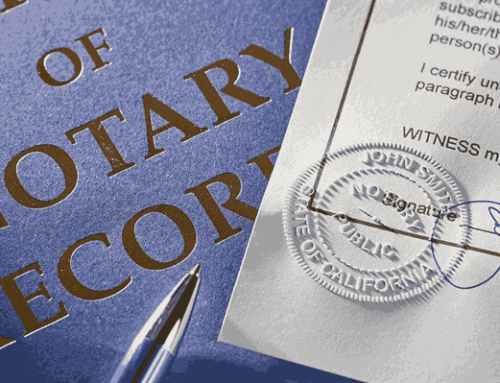In the complex realm of law, legal motions serve as powerful tools used by attorneys to advocate for their clients. Navigating the intricate web of rules and procedures governing the legal process. From seeking the dismissal of a case to obtain crucial evidence and motions enables parties.
Legal professionals struggling to find the right tools to equip practice in the best efficient way is not something new. The ability to craft compelling, well-structured motions can significantly impact the outcome of a case. This includes judgments and swaying decisions in your favor. Whether you’re drafting a motion to dismiss, or a motion for summary judgment. Honing your skills in this area is essential for success in the legal field. In this blog, we will explore 11 unique tips to improve your legal motion.
Importance of legal motion practice and its impact on legal proceedings
Legal motion practice plays a crucial role in the overall legal proceedings. It refers to the process of making formal requests, asking for a specific ruling, order, or decision.
Here are some key reasons why legal motion practice is important and how it influences legal proceedings:
- Asserting Legal Rights: Motions allow parties to assert their legal rights and seek remedies or relief from the court. By filing motions, parties can ask the court to enforce or interpret laws, rules, or regulations in their favor.
- Pretrial Strategy: Legal professionals often file motions before trial to shape the course of the litigation. Parties may file motions to dismiss a case, seek summary judgment, exclude evidence, or challenge the admissibility of certain facts. These pretrial motions help narrow down the issues, clarify legal arguments, or settlement of a case before trial.
- Legal Argument and Advocacy: Motions provide an opportunity for attorneys to present legal arguments and advocate for their clients’ positions. Through motions, attorneys can present their interpretation of the law, and analyze the relevant legal principles. Persuading the court to adopt their client’s viewpoint.
- Discovery Disputes: Legal professionals can file motions to resolve disputes related to the discovery process, which involves the exchange of information. Motions to compel discovery, protective orders, or sanctions for non-compliance can help ensure a fair and efficient discovery process.
- Procedural Issues: Motions address procedural matters and ensure that legal proceedings adhere to the rules of the court. Legal professionals can file motions to challenge jurisdiction, and venue, or to request a change of judge. They can also address issues related to the statute of limitations, the joinder of parties, or the consolidation of cases.
- Case Management and Efficiency: Motions help manage and streamline legal proceedings. They allow the court to control the progress of the case, resolve disputes, and make timely decisions on critical matters. Motions can help prevent delays, clarify legal issues, and ensure that the case moves forward in an efficient manner.
- Appeals and Post-Trial Motions: Motions play a vital role in the appellate process. After a trial, parties can file post-trial motions to challenge the judgment. Request a new trial, or seek other post-trial relief. These motions set the stage for potential appeals and provide an opportunity for parties to raise legal issues.
Overall, legal motion practice serves as a mechanism to protect the rights of parties. With shaping the course of litigation, resolve disputes, and ensure a fair and efficient legal process. It allows for the presentation of legal arguments, facilitates case management, and significantly impacts the overall outcome of legal proceedings.
11 Tips to Improve Your Legal Motion Practice

In the realm of trial advocacy, motions serve as powerful tools that can make or break a case. However, many attorneys, both seasoned and novice, often underutilize this versatile instrument, failing to maximize its potential.
To enhance your chances of success while you represent your clients. It is crucial to consider the following tips when drafting motions. While it cannot guarantee victory in every instance, adhering to these guidelines will undoubtedly increase your odds. Prevailing and ultimately satisfying your client’s expectations.
- Conduct Thorough Legal Research: To strengthen your motion, invest time in conducting thorough legal research. Dive deep into the relevant laws, rules, and precedents associated with your case. Familiarize yourself with the specific statutes, regulations, and case law applicable to your motion. This comprehensive research will serve as the foundation for persuasive arguments and help you anticipate potential challenges.
- Understand the Judge’s Perspective: Understanding the judge’s perspective is essential to curate your motion effectively. Research the judge assigned to your case and examine their background, preferences, and tendencies. Take note of their previous rulings and opinions on similar matters. By aligning your motion with their perspectives, you increase the likelihood of receiving a favorable response.
- Focus on Clear and Succinct Argumentation: When drafting your motion, focus on presenting clear and succinct arguments. Avoid using unnecessary legal jargon that may confuse or alienate the judge. Clearly state your position and the legal basis for your arguments. By using persuasive language that is concise and straightforward, you can engage the judge and effectively communicate your points.
- Utilize Visual Aids: Incorporating visual aids into your motion can significantly enhance clarity and impact. Consider using charts, graphs, or timelines to present complex information in a more accessible format. Visual representations simplify intricate concepts and help the judge understand your arguments more effectively.
- Incorporate Technology: Leveraging legal motion management technology can significantly streamline and enhance your motion practice. By utilizing specialized legal software or tools designed for organizing, collaborating, and presenting motions. You can efficiently manage your legal proceedings. Embracing technology enables you to expedite your research process, automate repetitive tasks, and ultimately improve the quality of your motions. With the help of legal motion management tools, you can effectively harness the power of technology.
- Craft Captivating Headings and Subheadings: Structuring your motion with captivating headings and subheadings enhances its readability and comprehension. Clear section titles enable the judge to navigate through your arguments easily. Engage the judge’s attention by using headings that highlight key points or arguments. Ensuring they can quickly grasp the core elements of your motion.
- Anticipate Counterarguments: Anticipating potential counterarguments strengthens your motion. Put yourself in the opposing counsel’s shoes and consider the arguments they may present. Address these counterarguments proactively in your motion and provide strong rebuttals supported by relevant legal authority. By addressing opposing claims, you demonstrate thoroughness and reinforce the strength of your position.
- Use Real-World Examples: Incorporating real-world examples or analogies into your motion can make complex legal concepts more relatable and understandable. Use scenarios that resonate with the judge to simplify intricate ideas. By grounding your arguments in practical examples, you help judge the implications and strengthen your overall case.
- Write with Clarity and Persuasiveness: Writing your motion with clarity and persuasiveness is essential for capturing the judge’s attention. Ensure your writing is clear, concise, and free from unnecessary language. Eliminate redundancies, improve sentence structure, and craft a compelling narrative that engages the judge. By presenting your arguments in a persuasive manner, you increase your chances of success.
- Consider Alternative Motions: Exploring alternative motions or arguments can provide fresh perspectives and maximize your chances of success. Consider different legal theories or approaches that may yield better results. Analyze the strengths and weaknesses of each alternative and select the one that aligns most effectively with your case.
- Learn from Successful Motions: Studying successful motions written by experienced attorneys is an invaluable learning opportunity. Analyze their structure, language, and techniques to understand effective strategies. Adapt and incorporate these strategies into your own motion practice while maintaining your unique style. By learning from successful motions, you can refine your approach and improve the quality of your motions.
Summing Up
Mastering the art of legal motion practice is an ongoing journey that requires diligence, and attention to detail. By implementing these 11 tips, you can enhance your motion drafting skills, and communicate your arguments persuasively. And increase your chances of achieving favorable outcomes for your clients.
Remember, effective motion practice is not only about presenting legal arguments; it is also about telling a compelling story. Anticipating opposing viewpoints and adhering to the rules and procedures of the court. By continuously refining your motion practice, you can position yourself as a formidable advocate and increase your effectiveness. Embrace these tips, remain adaptable to evolving legal landscapes, and never cease to strive for excellence in your motion practice.





